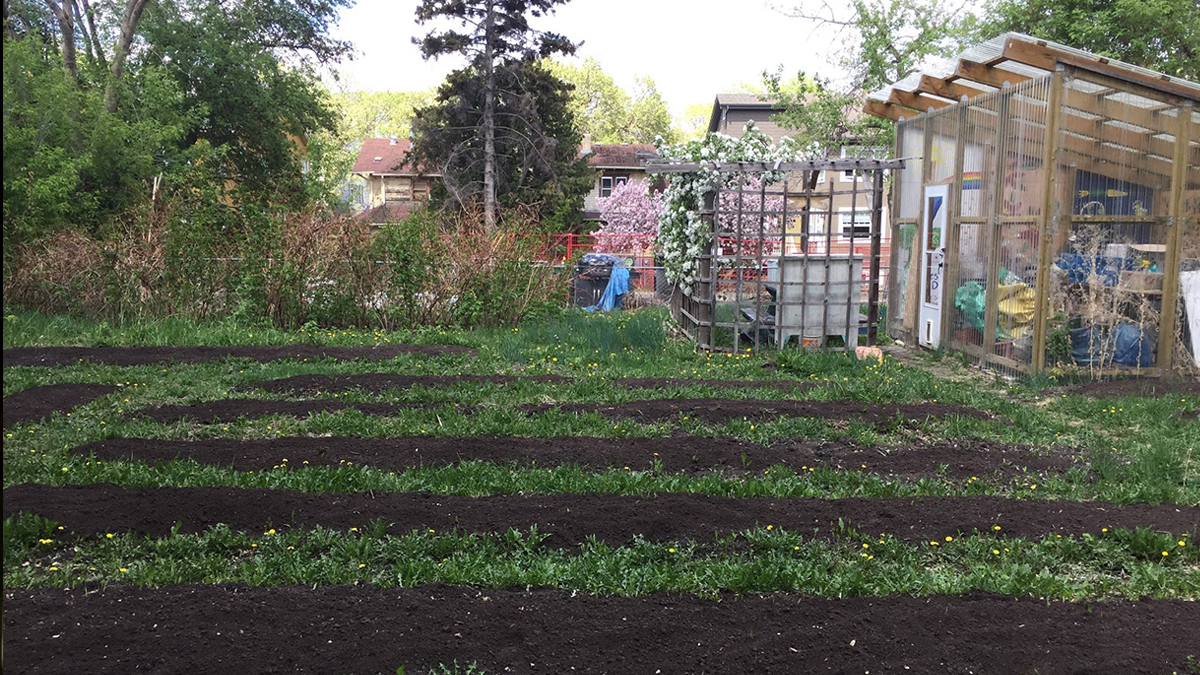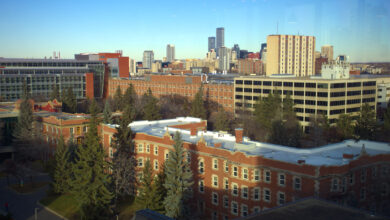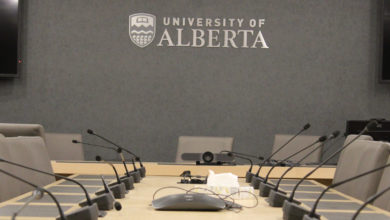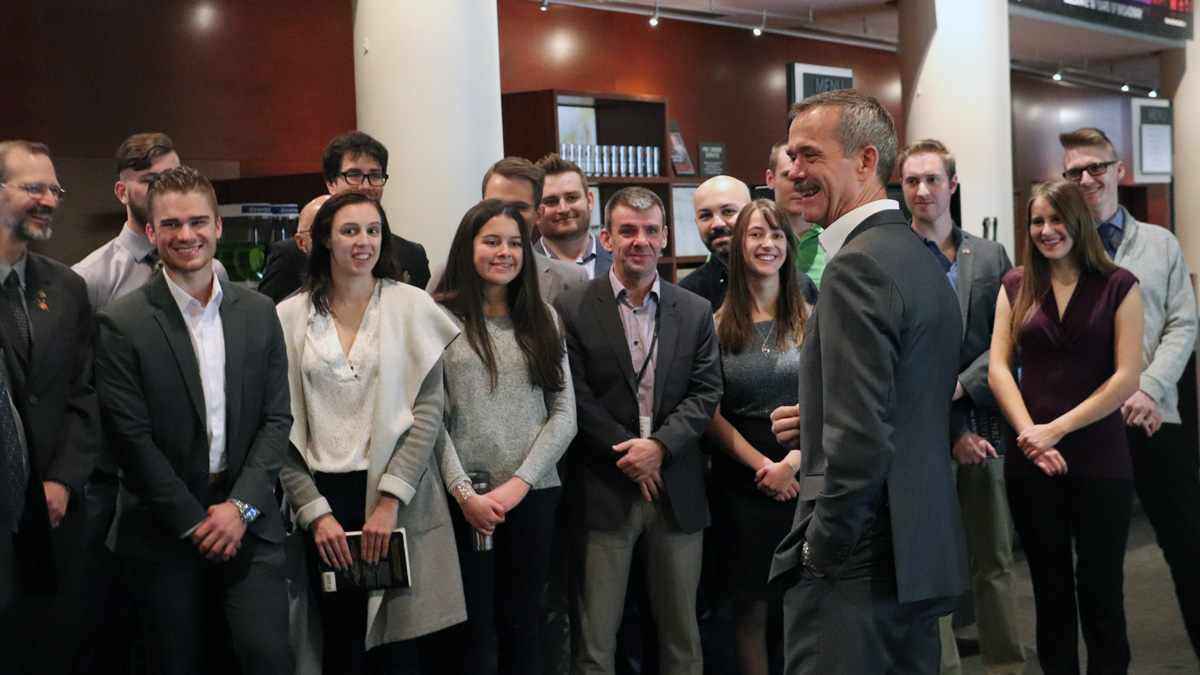 Olivia DeBourcier
Olivia DeBourcierWhen Colonel Chris Hadfield, the first Canadian to walk in space, walked into the lobby of the Jubilee Auditorium he was greeted by a wall of students.
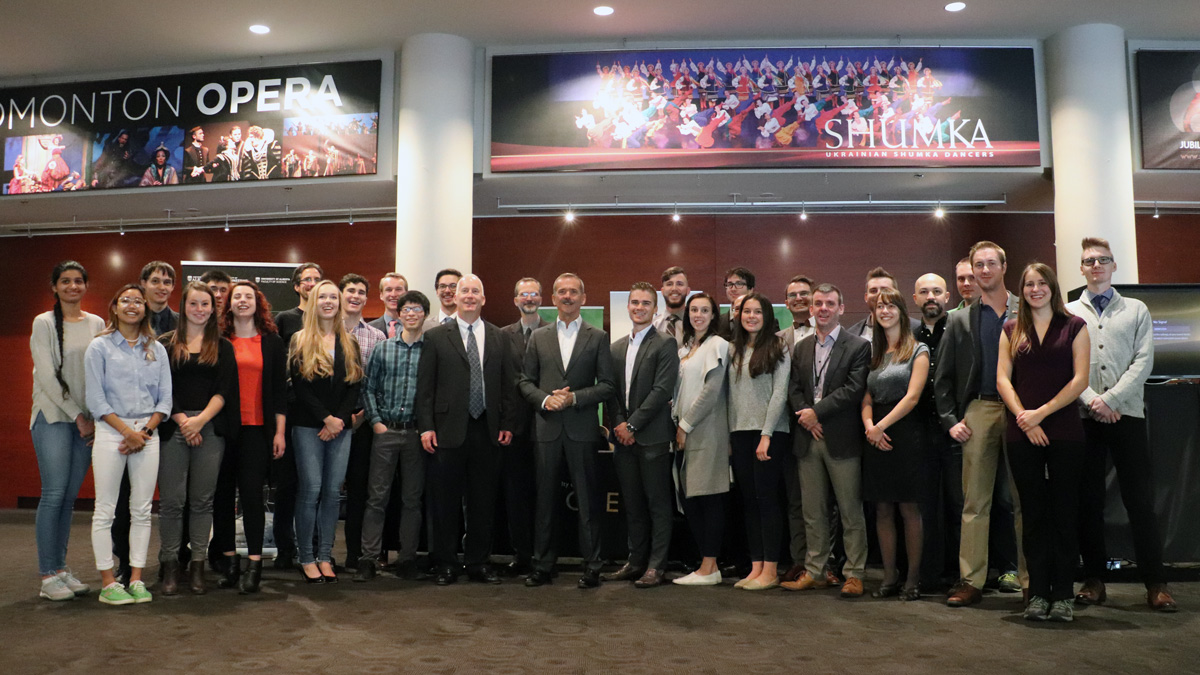
Hadfield was at the Jubilee for a sold-out talk on his experience as an astronaut on October 1. Before the theatre opened to the general public, the students in the AlbertaSat group got to introduce the astronaut to the satellite they designed, which was launched into space in April of this year. AlbertaSat is a group of undergraduate and graduate students, along with faculty advisors, who designed and built Alberta’s first satellite and are now working on their second.
“It’s a really rugged, solid worthwhile piece of hardware, just like every bit of space machinery ought to be,” Hadfield said about the students’ satellite, called the Ex-Alta 1.
The student team brought with them an exact replica of the Ex-Alta 1 cube satellite to the Jubilee in its actual size with all of its parts fully deployed. They removed some of the side panels so people could see the inner components. They even went as far as to singe the parts of the satellite that actually burn in space.
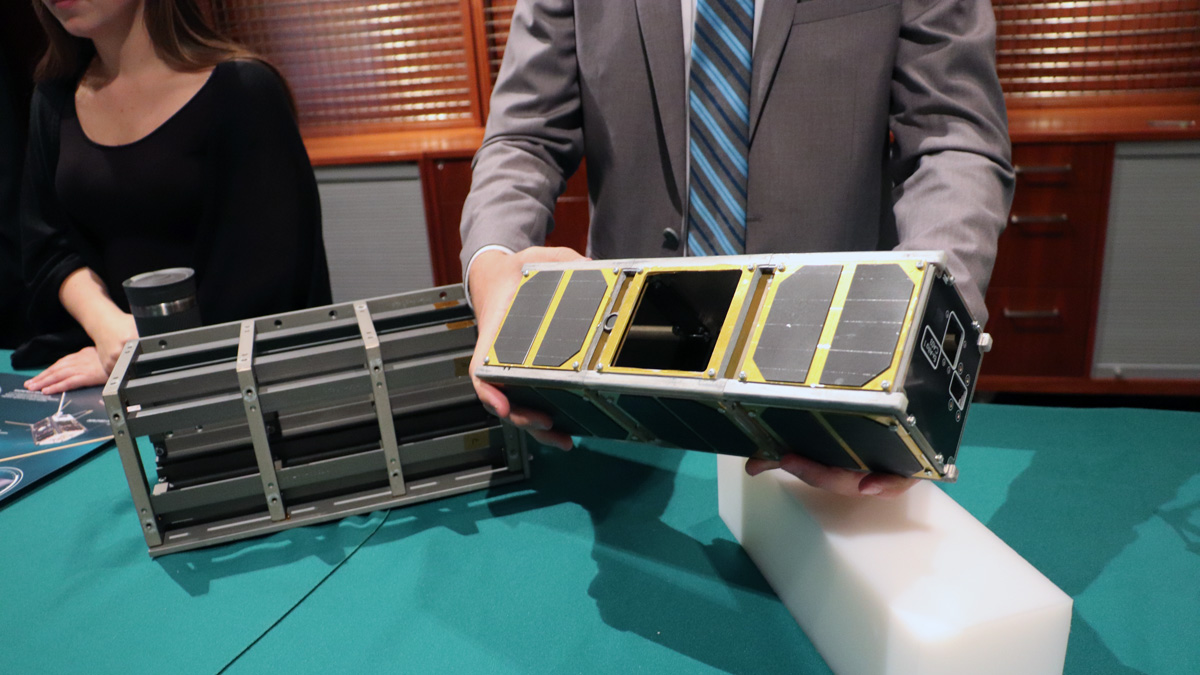
Callie Lissinna, a third-year mechanical engineering student, and Taryn Haluza-DeLay, a third-year engineering physics student, constructed the model together. It took one and a half years.
“We tried to mimic as closely as possible the assembly process of the actual satellite to give us some transferable skills for when we build our next spacecraft,” Lissinna said.
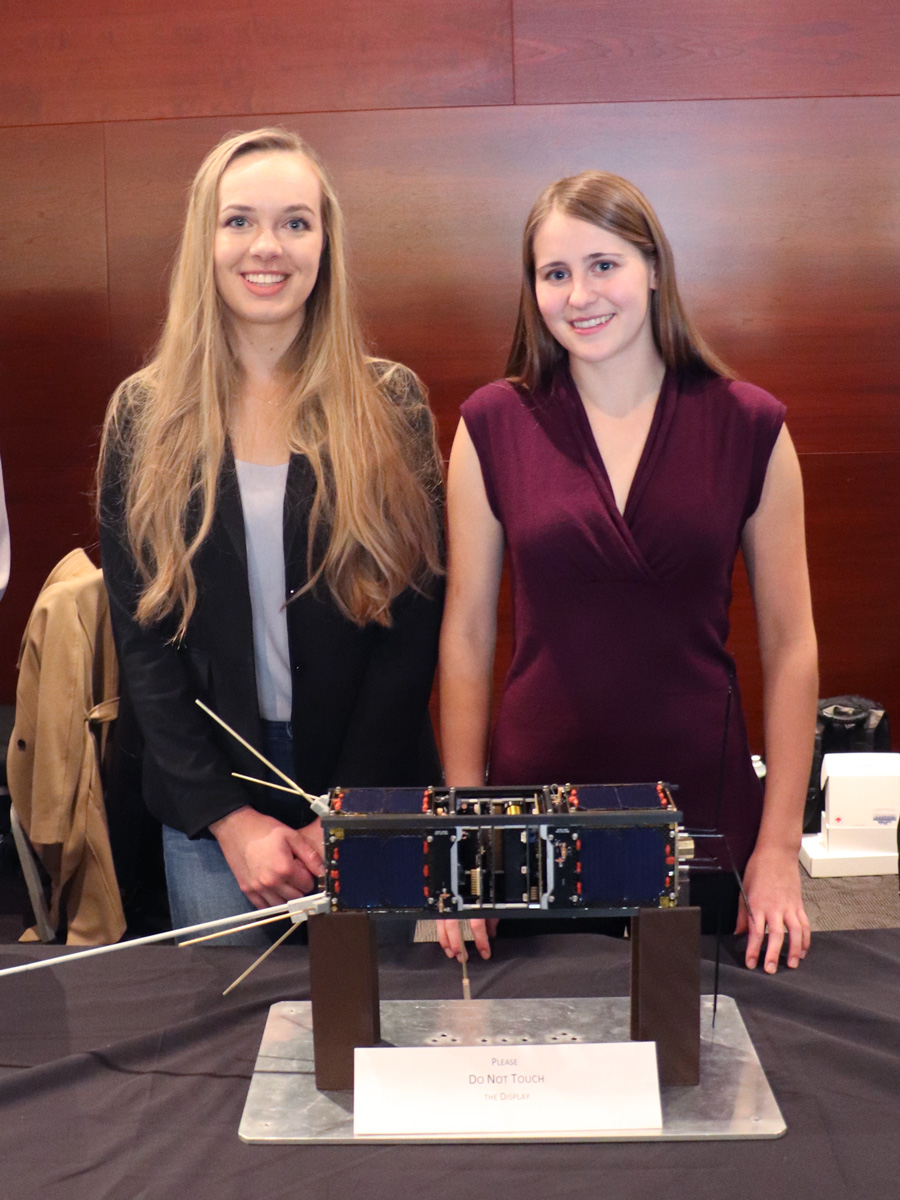
This model will be displayed in CCIS and the AlbertaSat students are currently in discussions with the Telus World of Science about making them a model of the satellite as well.
The AlbertaSat team also brought the ground control for the satellite and set it up in the lobby. On the computer monitor they simulated a pass from the satellite so that Hadfield and the public coming to see him speak could see the software they use to track Ex-Alta 1’s path.
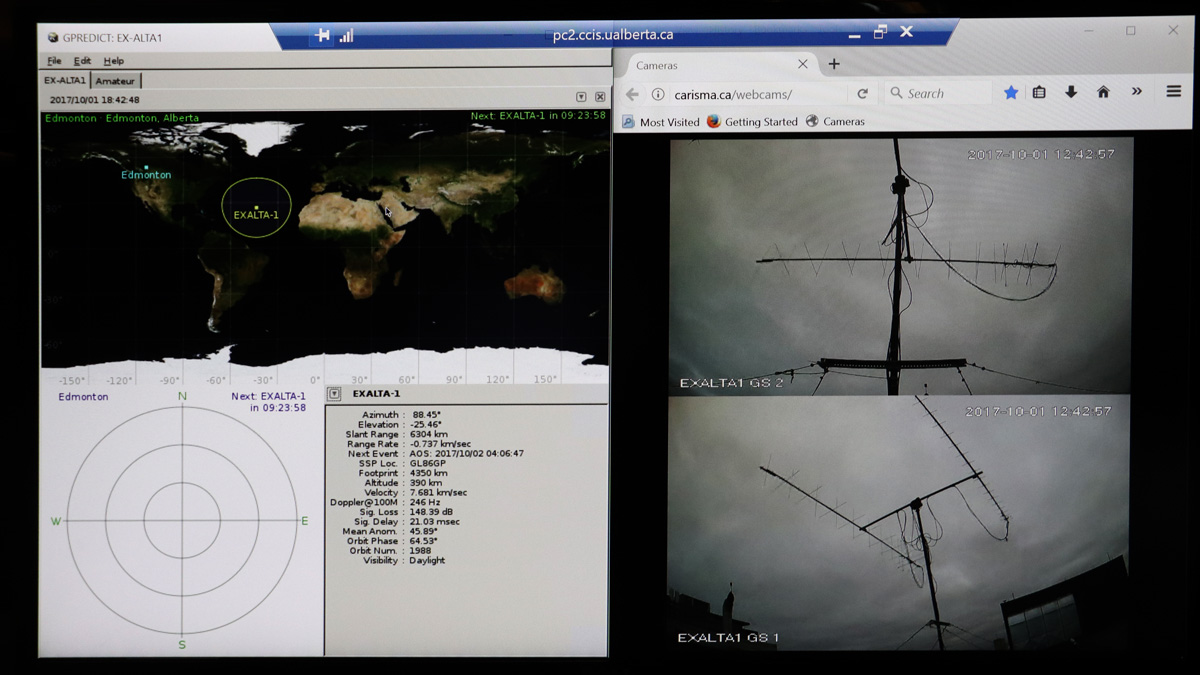
After admiring the satellite, Hadfield took questions from the AlbertaSat team and gave them advice on pursuing a career in the aerospace industry.
“Just looking at the students you can see their pride,” he said. “But also, the amount of work that’s involved just looking in their eyes.”
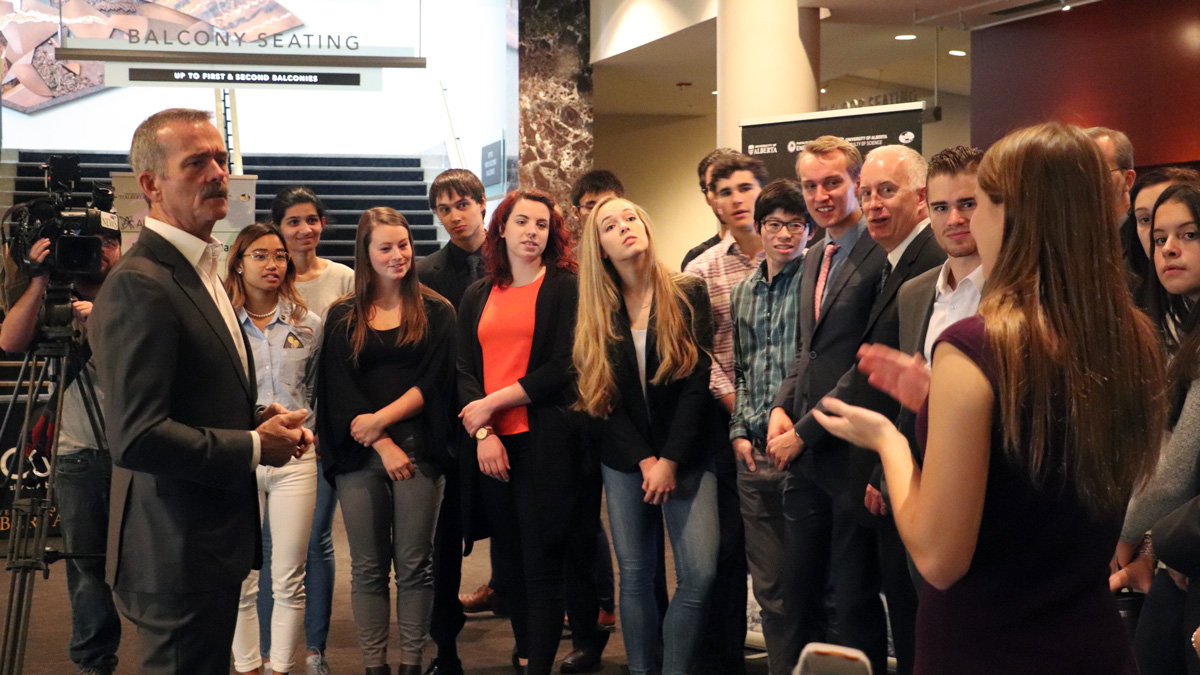
For many of these students, Hadfield is a hero. Tyler Hrynyk, a fifth-year mechanical engineering student and project manager for Ex-Alta 2, the group’s next project, said meeting the renowned astronaut was amazing.
“He’s someone that we all look up to,” he said. “To even hear that he was somewhat impressed with our project is amazing coming from somebody like him.”
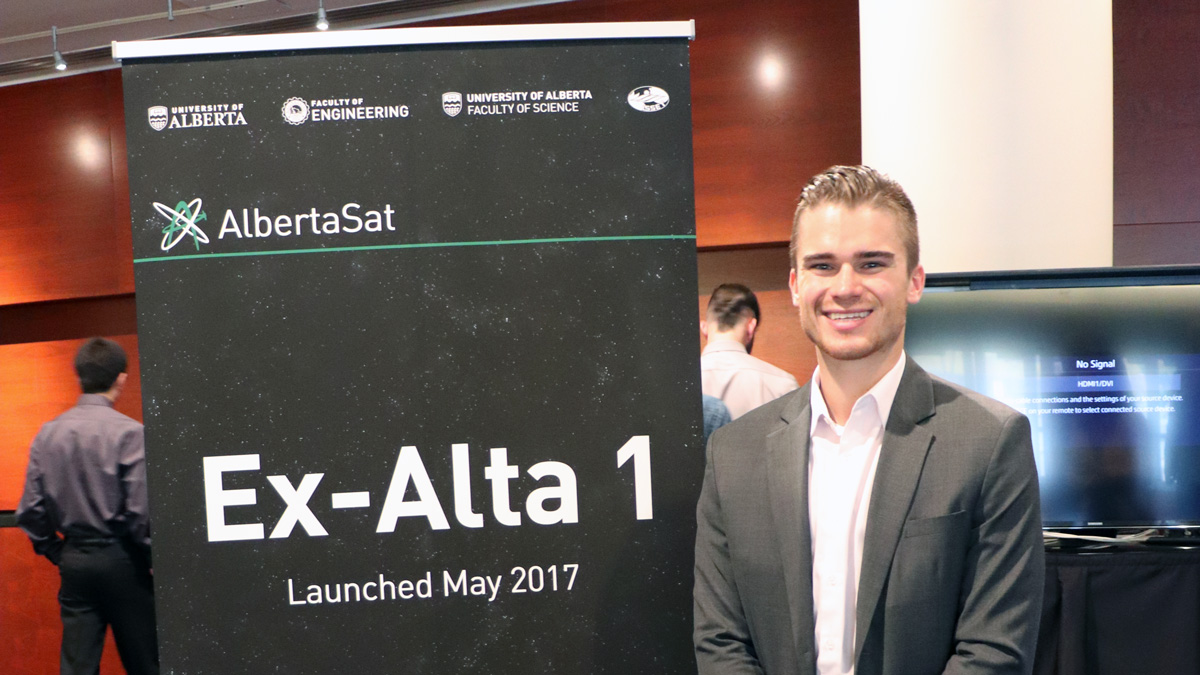
Hrynyk said he always found space interesting and joined the AlbertaSat group in his first year, since then it’s taken over his life.
“I’ve been privileged enough to see Ex-Alta 1 go from design concepts on paper to hardware, to being built, to being tested, to being launched, and now to being operated in space,” he said.
Abby Lacson, a second-year mechanical engineering student and aspiring astronaut, said she had goosebumps from meeting Hadfield.
“I wanted to cry,” she said.
Casia McLeod, a third-year mechanical engineering student, agreed.
“He’s such a genuine guy and it’s super cool to hear from someone who’s actually been in space,” she said.
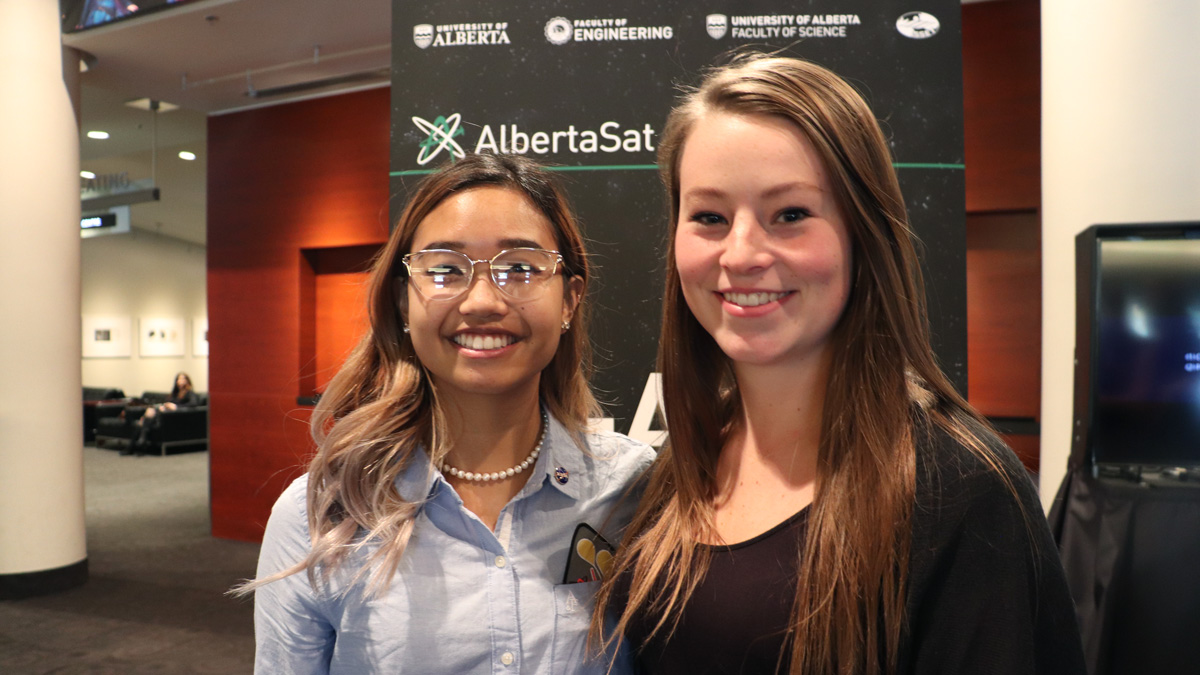
In response, Hadfield said that being a hero is a huge title but he believes it’s important to have people to look up to.
“I realize I’m hugely privileged as one of Canada’s astronauts,” he said. “It also is a big responsibility and part of that responsibility is not to keep it to myself, to share everything I’ve learned as much as I can so that other people can benefit from the things I got to do.”
Ian Mann, a physics professor and Canada Research Chair in Space Research, said it’s a unique opportunity to have Hadfield come learn about the AlbertaSat from the students who made it.
“These are students who have worked incredibly hard and shown remarkable innovation to achieve an aerospace first, the first ever made-in Alberta satellite to be in orbit but perhaps that will be just the very first steps from those students as they go out into the world,” he said.
Read our Q&A with Chris Hadfield here.

